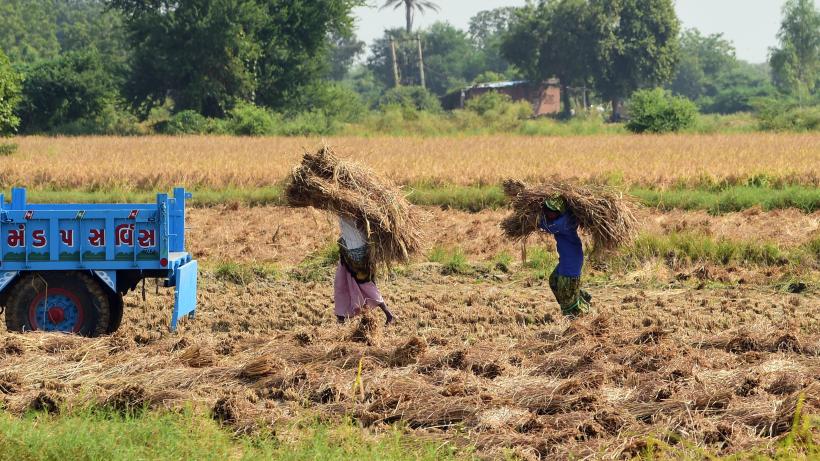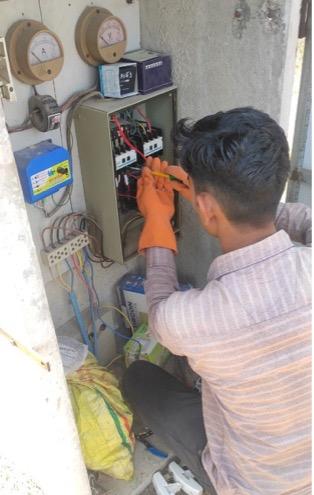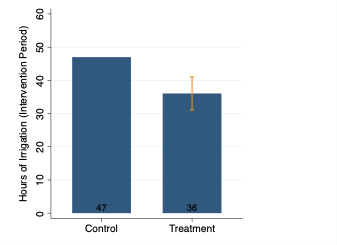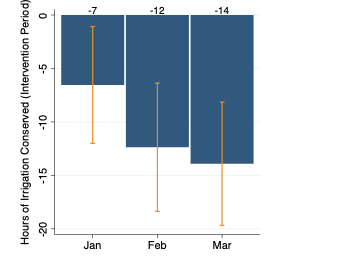
How farmers in India can be incentivised to save water
Payments for voluntary water conservation work, incentivising farmers to pump less water at reasonable prices, could be part of the solution to the groundwater crisis in India and other parts of the world.
Many parts of the world suffer from groundwater depletion. This is not a new problem, but is getting worse in regions like South Asia as temperatures continue to rise and monsoon rains grow more erratic. Groundwater irrigation is incredibly valuable, feeding hundreds of millions of people, but we’re using it so quickly in many areas that depletion is threatening the ability to grow food and enjoy safe drinking water.
In India, the problem is even worse due to high subsidies for electricity that is widely used to power groundwater pumps. Most farmers pay only a fixed amount for an electricity connection, regardless of how much they use. Power utilities struggle to recover their costs or provide reliable service.
What can be done? The textbook economic solution would be to charge people for each unit of water they pump (or for each unit of electricity they use). A price per unit would provide a financial incentive to conserve water and electricity, which doesn’t exist right now. But charging for water or electricity would also be a financial disaster for low-income farming households, for whom energy subsidies are a lifeline.
Offering conservation payments as an alternative
We wanted to test a slightly different idea. Instead of charging farmers for each unit of groundwater they pump, we considered paying them for each unit they conserve. This puts in place the exact same financial incentive as a price, but it doesn’t hurt anybody. Depending on how much electricity is conserved, it could be cheaper for a power utility to offer conservation payments – essentially buying farmers out of their subsidies – than to continue providing the electricity.
For this, we first install a meter that measures the number of hours the electricity is being used to pump groundwater. Each month, we give the farmer a benchmark, and then returned to read the meter. For each hour pumped below the benchmark, the farmer got a small payment. For example, let’s say a farmer’s benchmark was 50 hours and the payment for not pumping is INR 50 per hour. Pumping for only 40 hours (10 hours less than her monthly benchmark) would earn her INR 500, while pumping for 60 hours (more than her monthly benchmark) would earn her nothing.

Our research team trialed this incentive-approach to conserve groundwater in Gujarat, a water-scarce state in western India, in partnership with a local nonprofit organisation, the Aga Khan Rural Support Programme - India. To evaluate the programme, we used a randomised controlled trial. Out of around 1,000 farmers, half were chosen by lottery for the conservation payments programme, while the rest served as a comparison group. (All participants received meters)
Farmers conserved more water at a reasonable price
Our findings show that conservation payments work. On average, farmers who were offered the payments pumped groundwater for 24 % less time in each month than farmers assigned to the control group (Figure 1). We found similar results when we converted pumping time to units of electricity used by the pumps.

Interestingly, conservation of the groundwater by pumping less increased as the programme went on (Figure 2). In fact, pumping decreased in the comparison group as well during this time, making the rise in conversation even more dramatic. This increase suggests that the response is durable. Since our programme only lasted for one irrigation season, farmers only had limited ways to respond. In a longer-term programme, they could conserve even more water by switching crops, installing drip irrigation, or adopting tillage practices that conserve water.

We also found that the price doesn’t have to be terribly high to get a fair amount of conservation. Of the farmers in the programme, we offered half of them INR 50 per hour (about US$ 60 cents), close to what is being considered in similar reform efforts in the state of Punjab in the country. But we wondered if perhaps this price level was too low. Would a higher price get a lot more conservation? To test this, we offered the other half of the farmers receiving conservation payments in the programme, a price incentive of INR 100 per hour (twice as high), and it did not seem to matter much. Most of the conservation we saw in our programme was achieved with prices at realistic, policy-relevant levels.
Our study showed that conservation payments are cost-competitive with buying more electricity for a utility company. When we calculate the cost of payments in our programme per unit of electricity conserved, it turns out to be near the cost of electricity procurement. With a few adjustments the programme might be an attractive strategy for demand management.
Conservation payments can thus be a promising piece of the puzzle for sustainable groundwater management, not just in India but around the world.

